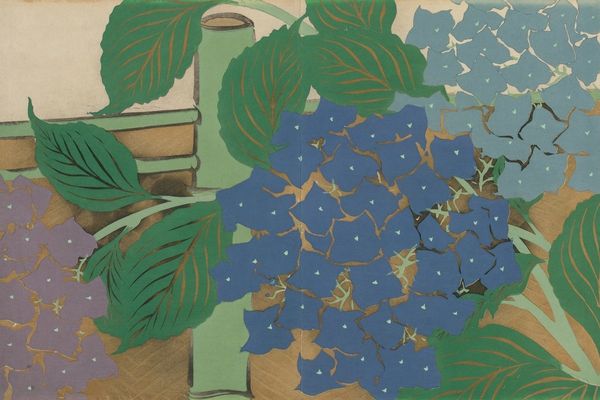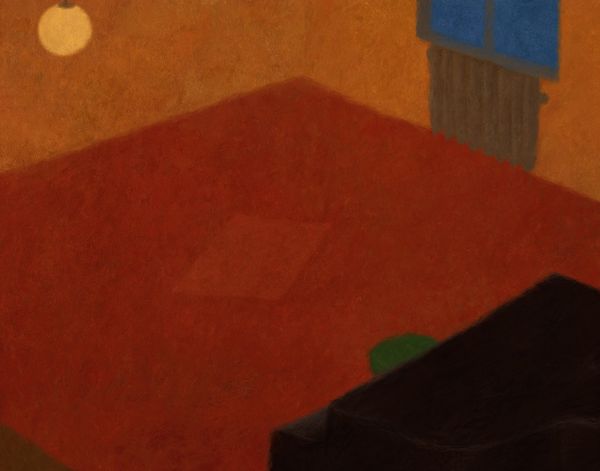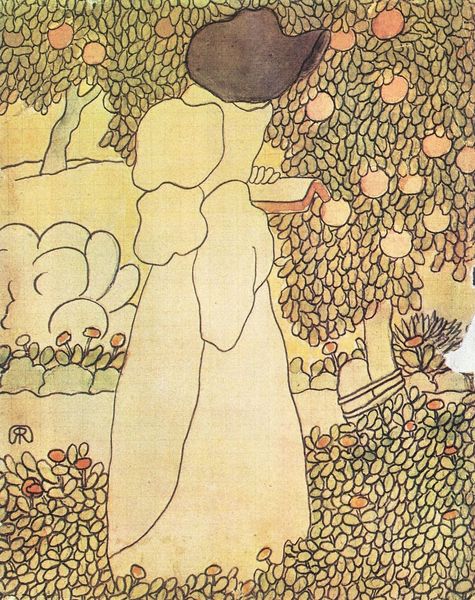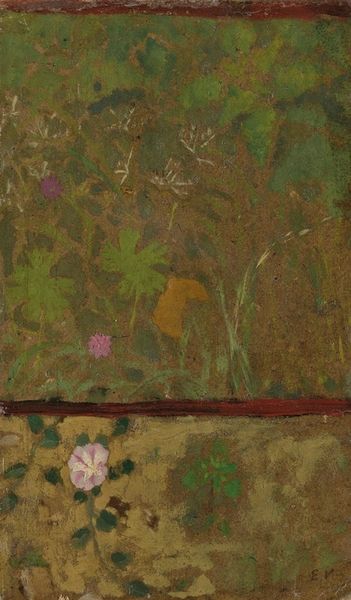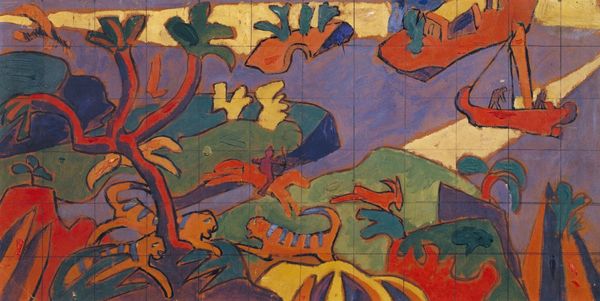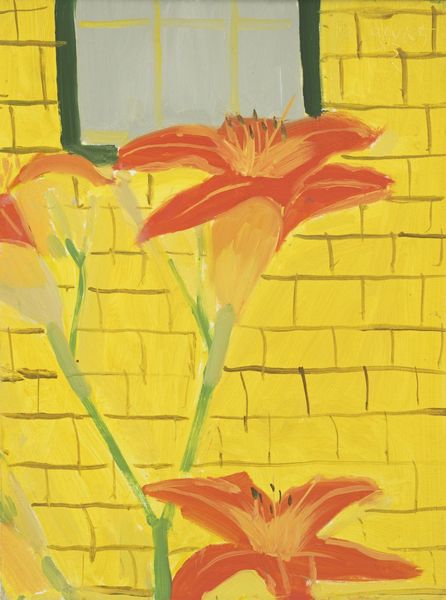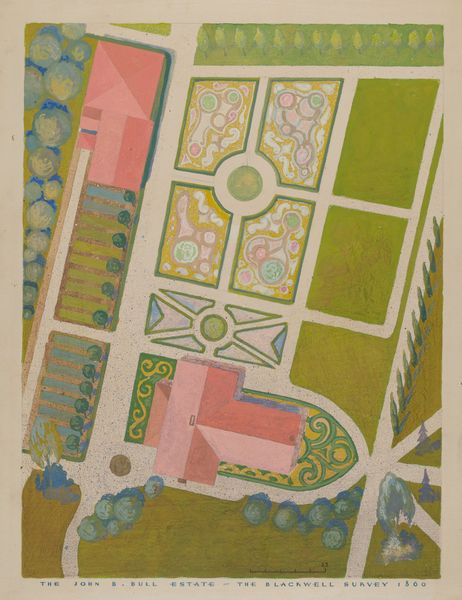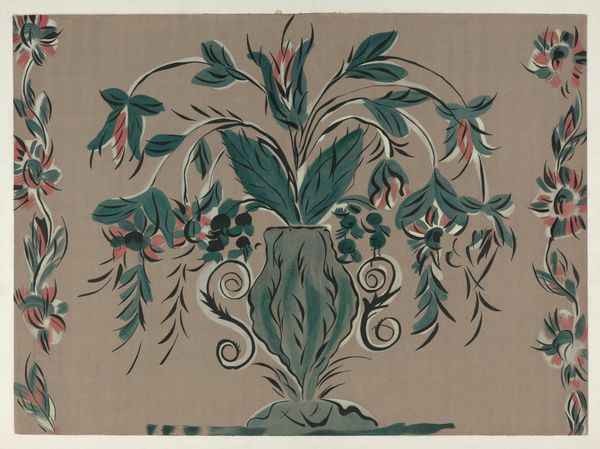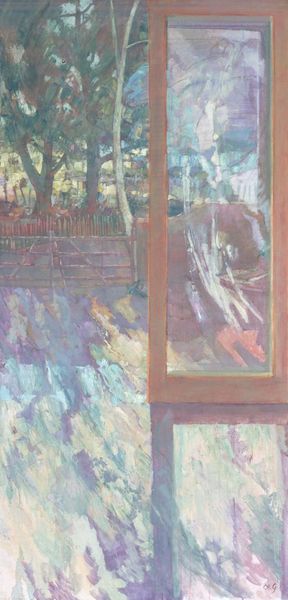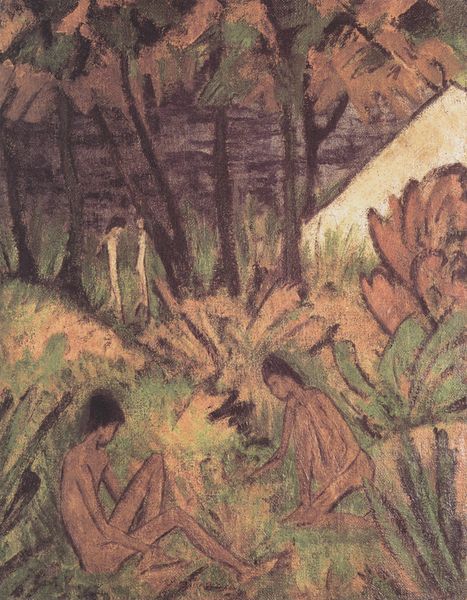
Copyright: Public domain
Curator: Standing before us is Édouard Vuillard's "The Chestnuts," created in 1895 and held here at the Dallas Museum of Art. Vuillard, associated with the Nabis movement, captures an intimate cityscape with this painting. Editor: My immediate impression is of fragmented intimacy. It’s almost like viewing the world through a kaleidoscope of domesticity. There’s a palpable sense of enclosure created by the dominating chestnut leaves. Curator: Precisely! That sensation speaks volumes about Vuillard's exploration of interiority and the role of women in domestic settings. The use of the window frame isn't merely structural. It signifies the barriers—both physical and societal—that confined women's lives. The chestnut tree in full bloom acts as a filter, softening the outside world, symbolizing the ways in which domestic life shaped perception. Editor: Indeed. The formal aspects reinforce this idea. Notice how the painting almost dissolves into patterns. The flattened perspective and close-valued color harmonies—the greens and browns especially—create a tapestry-like effect. The visible brushstrokes add a textural element. Everything serves to draw the eye inward, mirroring a state of interior contemplation. Curator: Consider the figures within the cityscape. They aren't merely observed; they are situated within a power dynamic, with the presumably female subjects on the other side of the window in a controlling setting, while the inhabitants of the outside street seem more vivacious. These relationships explore gendered roles in the late 19th century and their associated societal expectations. Editor: Absolutely. The very composition emphasizes the boundaries between these worlds. The contrast in texture—the defined architectural geometry with the mosaic leaf design—it creates a dialogue between order and nature, interior and exterior. Vuillard pushes us to decipher a language of forms, and the semiotics speak of containment and separation. Curator: "The Chestnuts", despite its outwardly calm appearance, asks complex questions about seeing and being seen, particularly through the lens of gender and class, making it so much more than just an Impressionist landscape of Paris. Editor: It’s a visually engaging painting that encourages close, repeated viewing. Ultimately, a very personal narrative comes into view.
Comments
No comments
Be the first to comment and join the conversation on the ultimate creative platform.
